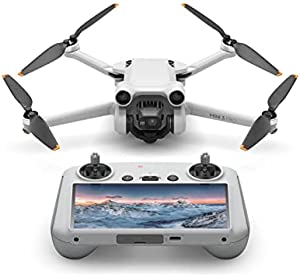As a responsible pet owner, it's crucial to keep your furry friend clean and healthy. Proper grooming not only makes your dog look good, but it also promotes their overall well-being. Investing in the right dog grooming tools can make this task easier and more effective. In this article, we'll cover everything you need to know about dog grooming tools.

What are Dog Grooming Tools?

Dog grooming tools refer to a variety of equipment used to keep your dog clean and healthy. These include combs, brushes, clippers, shampoos, conditioners, nail trimmers, and many other items. Each tool serves a specific purpose and can help you maintain your dog's coat, skin, and nails.
Types of Dog Grooming Tools
Here are some common types of dog grooming tools:
- Combs: These tools detangle your dog's hair and remove loose fur. There are several types of combs, including slicker combs, pin brushes, and flea combs.
- Brushes: Brushes help distribute natural oils throughout your dog's coat and remove dirt and debris. Some popular brush types include bristle brushes, rubber curry brushes, and shedding blades.
- Clippers: Clippers are used to trim your dog's hair, especially around their face, ears, and paws. They come in various sizes and styles, such as cordless or rechargeable.
- Shampoos and Conditioners: These products help clean and moisturize your dog's skin and coat. Some shampoos are formulated to address specific issues, such as fleas, allergies, or dry skin.
- Nail Trimmers: These tools allow you to trim your dog's nails safely and prevent them from getting too long. They come in several styles, including guillotine, scissor, and grinder.
Pros and Cons of Using Dog Grooming Tools
Like any tool, dog grooming tools have their advantages and disadvantages. Here are some pros and cons to consider:
Pros
- Regular grooming can help keep your dog's coat healthy and shiny.
- Grooming can promote good circulation and prevent skin diseases.
- Grooming allows you to check for any lumps, bumps, or injuries on your dog's body.
- Grooming can strengthen the bond between you and your furry friend.
Cons
- Some dogs may not enjoy being groomed and may become anxious or aggressive.
- Grooming can be time-consuming and requires patience and skill.
- Using the wrong tool or technique can cause discomfort, pain, or injury to your dog.
- Some grooming products, such as shampoos, may contain harsh chemicals or irritants that can harm your dog's skin or eyes.
Alternatives to Using Dog Grooming Tools
If your dog doesn't tolerate grooming well, there are alternative ways to keep them clean and healthy. Some options include:
- Taking your dog to a professional groomer: A professional groomer has the expertise and equipment to groom your dog safely and effectively.
- Using natural remedies: You can use natural ingredients, such as coconut oil or apple cider vinegar, to clean and condition your dog's coat.
- Giving your dog a bath: Bathing your dog regularly with a gentle shampoo can remove dirt and debris from their coat.
How to Use Dog Grooming Tools

Using dog grooming tools requires some knowledge and practice. Here are some general tips to help you get started:
- Choose the right tool for the job: Make sure you select a tool that suits your dog's size, coat type, and grooming needs.
- Start slowly: If your dog is new to grooming, introduce them to the tool gradually and reward them with treats and praise.
- Use gentle pressure: Avoid applying too much pressure, as this can cause discomfort or pain to your dog.
- Be cautious around sensitive areas: When grooming sensitive areas, such as the ears, paws, or tail, use extra caution and care.
- Take breaks: If your dog becomes restless or uncomfortable, take a break and resume grooming later.
Step-by-Step Guide to Grooming Your Dog

Here is a general guide to grooming your dog:
- Start by combing or brushing your dog's coat to remove any tangles or mats.
- Trim your dog's nails with a nail trimmer. Be careful not to cut the quick, which is the pink part of the nail that contains blood vessels.
- Clean your dog's ears with a soft cloth or cotton ball. Be gentle and avoid inserting anything into the ear canal.
- Brush your dog's teeth with a toothbrush and dog-friendly toothpaste to prevent dental problems.
- Bathe your dog with a gentle shampoo and conditioner, if necessary. Rinse thoroughly and dry your dog with a towel or hair dryer on a lowheat setting.
- Use clippers or scissors to trim any long hair around your dog's face, ears, and paws, if needed.
Comparison of Popular Dog Grooming Tools
Here is a comparison of some popular dog grooming tools:
| Tool | Purpose | Pros | Cons |
|---|---|---|---|
| Slicker Brush | Removes tangles and mats from the coat | Effective for long-haired dogs | Can cause discomfort if used too aggressively |
| Rubber Curry Brush | Removes dirt and loose fur from the coat | Gentle on the skin | Not suitable for heavy shedding |
| Guillotine Nail Trimmer | Cuts the nail using a blade that slides across a stationary ring | Easy to use | Can crush the nail if not used correctly |
| Scissor Nail Trimmer | Cuts the nail using sharp blades | Provides more control than guillotine trimmers | Requires more skill and practice |
| Cordless Clippers | Trims the hair using a rechargeable battery | Convenient and portable | May not be as powerful as corded clippers |
Tips for Choosing the Best Dog Grooming Tools
When choosing dog grooming tools, here are some factors to consider:
- Your dog's breed, size, and coat type
- Your dog's grooming needs and preferences
- The quality and durability of the tool
- The safety features of the tool, such as rounded edges or non-slip handles
- The price and value for money
Frequently Asked Questions (FAQs)
Q1: How often should I groom my dog?
A: It depends on your dog's breed, coat type, and lifestyle. Generally, you should brush your dog's coat daily or weekly, bathe them every 2-3 months, and trim their nails every 4-6 weeks.
Q2: Can I use human shampoo on my dog?
A: No, human shampoo is not recommended for dogs as it can disrupt the pH balance of their skin and cause irritation or dryness. Use a dog-friendly shampoo instead.
Q3: How do I prevent my dog from getting ear infections during grooming?
A: Be gentle when cleaning your dog's ears and avoid inserting anything into the ear canal. Dry their ears thoroughly after bathing or swimming and check them regularly for signs of redness, swelling, or discharge.
Q4: Can I groom my dog at home without professional training?
A: Yes, but you should educate yourself on the proper tools and techniques and start slowly with basic grooming tasks. Consider taking a class or consulting a professional groomer for guidance.
Q5: What should I do if my dog gets anxious during grooming?
A: Take breaks as needed, use positive reinforcement such as treats and praise, and consider using calming aids such as aromatherapy or pheromone sprays. If your dog's anxiety persists, consult a veterinarian.
Conclusion
Dog grooming tools are essential for maintaining your furry friend's health and appearance. By choosing the right tools and following proper grooming practices, you can help prevent skin issues, nail problems, and dental diseases. Remember to be patient, gentle, and attentive to your dog's needs during grooming. With a little practice and care, you and your dog can enjoy a happy and healthy grooming routine.


